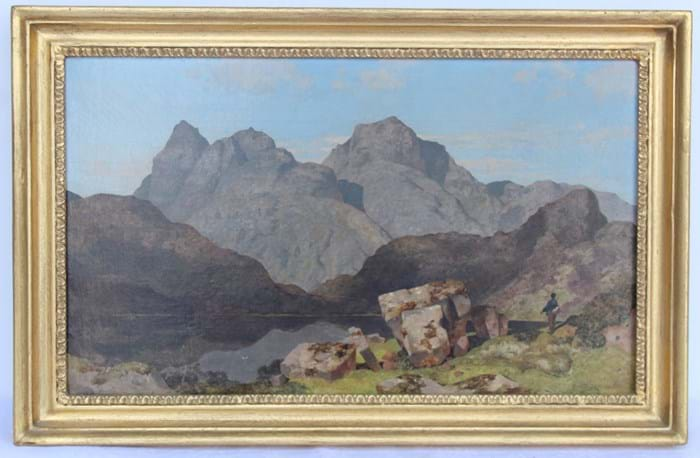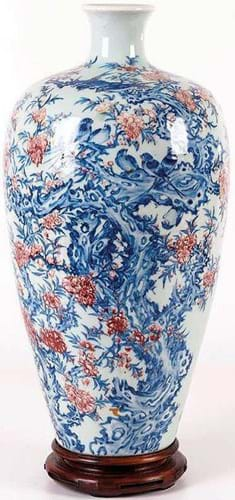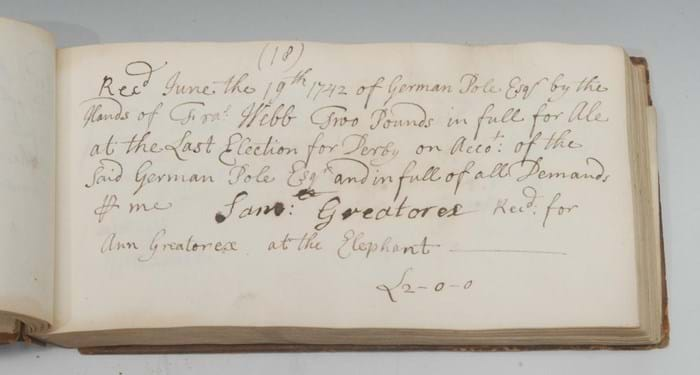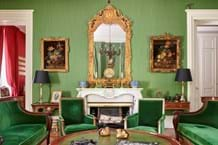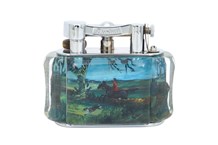1. Dominion petrol pump globe – £23,000
Every collector of original glass petrol pump globes hopes to own examples by the classic big brands – BP, Shell, Esso and the like. With a little patience and a decent budget, plenty of examples are available across a year.
However, once those ‘entry level’ pieces have been acquired, it is the globes by the more obscure brands that come highest on the wish list. They can be much harder to find – and much more expensive.
Richard Edmonds in Chippenham, Wiltshire, has sold some very rare British petrol pump globes in recent years – including a lantern-shaped globe for Dominion sold for £13,000 in October 2019. Dominion was launched in 1923 but was quickly swallowed up by Sealand Petroleum.
If that price had been impressive then it paled next to the bidding for another Dominion globe offered by the auctioneers on October 31. The Deco-inspired Dominion Guaranteed globe dated to c.1937 and was in excellent condition, retaining all of its original blue, red and black decals.
Estimated at £3000-5000, it sold at £23,000 - thought to be a record for a British petrol globe and akin to the sort of mighty sums paid for rarities made in the US.
2. Blacklock oil painting – £33,000
Although he made his reputation in London among the Pre-Raphaelites, the Victorian landscape painter William James Blacklock (1816-1858) is intimately connected with the scenery of Cumbria and the Scottish Borders.
He was raised in the small village of Cumwhitton – just east of Carlisle where he attended the local Academy of Art – and returned there as his health and eyesight deteriorated in 1850. The Tullie House Museum and Art Gallery in Carlisle holds the largest collection of his work.
This 13 x 22in (33 x 56cm) oil, Blea Tarn and the Langdale Pike, is signed and dated 1852 – the year it was shown at the Royal Academy. Blacklock’s technique included using luminous glazes over a white ground – one studied closely by both his friend and admirer William Bell Scott (1811-90) and Dante Gabriel Rossetti. However, rather than strictly following nature, in this painting some of the geographical reality is lost at the expense of composition.
Blacklock's finished oils, bought in the early 1850s by the Tyneside industrialists and art collectors who patronised the Pre-Raphaelites, are rare. This example, that had been relined, came for sale at Carlisle firm Thomson Roddick on October 28. Offered on behalf of a descendant (there were 23 lots of Blacklock interest in the sale), it was pitched at £8000-12,000 but sold via thesaleroom.com for £33,000.
3. Archibald Knox clock – £20,000

Extra-size ‘Tudric’ pewter and abalone clock, c.1900 by Archibald Knox – £20,000 at Lyon & Turnbull.
Lyon & Turnbull’s Decorative Arts: Design since 1860s auction on November 2-3 included this rare extra-size ’Tudric’ pewter and abalone clock by Archibald Knox (1864-1933).
Knox’s designs for Liberty & Co are very well documented. However, this 10in (25cm) model – a minimalist form thought to have been inspired by the Celtic standing stones of Knox’s native Isle of Man – is usually seen in a much smaller size of just over 6in (16cm) high.
Knox is known to have produced a small number of extra-sized clocks during his Liberty period and it may be that this rare example was produced as a special commission.
It was estimated at £20,000-30,000 and got away at the lower end of expectations.
4. Kangxi meiping – £17,250
Although catalogued as Japanese, this 21in (54cm) meiping vase with underglaze blue and red decoration is more probably Chinese and from the Kangxi (1662-1722) period.
The decoration of swallows amidst fruiting apricot trees and a willow is deemed particularly suitable as a gift for someone taking exams. In Chinese the word for swallow (yan) is homophonous for banquet while the phrase ‘May you enjoy the Spring banquet in the Apricot Grove’ references the celebrations traditionally held in an orchard for those who passed the imperial Confucian examinations
At Wendl in Rudolstadt, Germany on October 22, it sold at €19,000 (£17,250).
5. Georgian estate’s account book – £2700
An item of local interest to bidders at Bamfords in Derby on October 29 was this 18th century account book for Radbourne Hall, the seat of the Chandos-Pole family. It covers the period 1741-42 when one Francis Webb was steward to German Pole (b. 1687), the builder of the present house.
The manuscript comprises 146 ink receipts that together encapsulate the life of the Derbyshire gentry life during the reign of George II. It includes receipts signed by pub landlords for the provision of food and drink for voters in the 1741 general election, in which Pole, a Jacobite, stood in the Tory interest. It seems he expended £183 11s 6d in some 20 hostelries – and to little avail.
According to contemporary accounts, Pole had been expected to win, but after the Mayor and Chamberlains arbitrarily ordered the polls to close at lunchtime, many from out of town were not able to cast their votes and the seat fell to the Whigs.
Pole engaged the architect William Smith the Younger to build Radbourne Hall c.1741-43. Throughout the book are receipted payments to craftsmen and suppliers of materials relating the building including two (for a total of £55) to Derby master stuccoer Abraham Denstone the elder, three (total £13 17s) to Anthony Richardson of behalf of the joiner George Eborall. Others include the purchase of a pair of ‘mahogany round tables’ priced at £1 7s from John Trimmer, a notable Derby cabinet maker and £4 to John Whitehurst of Derby for a bracket clock.
Such a rich source of local history looked undercooked at the £100-150 estimate and so it proved when it sold at £2700.



